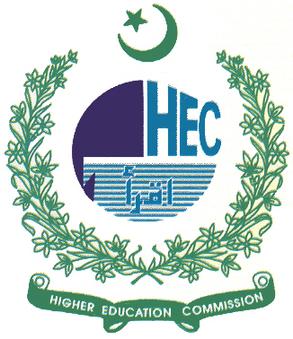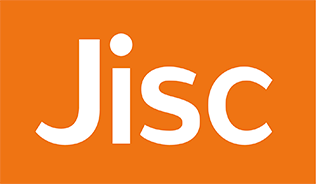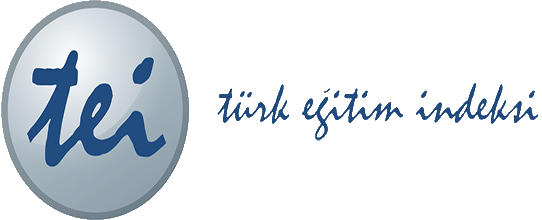Optimizing Motor Recovery: Dual-Task Training versus Motor Relearning Program for Ambulatory Left-Hemiplegic Stroke Patients
Dual-Task Training vs. Motor Relearning Program in Stroke
Keywords:
Balance, Gait, Impairments, Stroke RehabilitationAbstract
Background: Stroke is a significant cause of long-term disability, leading to chronic impairments of balance and gait. However, successful rehabilitation can help stroke survivors improve their mobility and quality of life. This study compares the effects of Dual-Task Training (DTT) and Motor Relearning Program (MRP) on dynamic balance and gait parameters in chronic stroke patients with left hemiplegia.
Methods: A randomized, double-blinded controlled trial was done in a tertiary care hospital from March to August 2023. Through simple randomization, 40 subjects with chronic left hemiplegic stroke were allotted into either the DTT group or the MRP group. Both groups received 45-minute sessions three times weekly for 12 weeks. The primary outcomes measured were the 10-Meter Walk Test (10MWT) and the Timed Up and Go Test (TUG)—secondary outcomes related to gait parameters, step length, cadence, cycle time, and stride length. Statistical analyses involved paired and independent t-tests, with a set level of significance described as p<0.05.
Results: The statistical improvements in the DTT group show in the gait speed (10MWT) and TUG scores, which are significantly better than in the MRP group (p<0.05). Likewise, the DTT group’s step length, cadence, cycle time, and stride length also improved significantly (p<0.05).
Conclusion: The use of DTT significantly improves the dynamic balance and gait of chronic stroke patients with left hemiplegia compared to MRP. This underscores the effectiveness of DTT as a tool for rehabilitating motor function in stroke patients. Further research should be pursued to optimize its application and evaluate long-term outcomes.
References
Lanas F, Seron P. Facing the stroke burden worldwide. The Lancet Global Health. 2021 Mar 1;9(3):e235-6.
Tiwari S, Joshi A, Rai N, Satpathy P. Impact of stroke on quality of life of stroke survivors and their caregivers: a qualitative study from India. Journal of Neurosciences in Rural Practice. 2021 Oct;12(04):680-8.
Krakauer JW, Carmichael ST. Broken movement: the neurobiology of motor recovery after stroke. MIT Press; 2022 Jun 7.
Shahid J, Kashif A, Shahid MK. A comprehensive review of physical therapy interventions for stroke rehabilitation: impairment-based approaches and functional goals. Brain Sciences. 2023 Apr 25;13(5):717.
Ghrouz A, Marco E, Muñoz-Redondo E, Boza R, Ramirez-Fuentes C, Duarte E. The effect of motor relearning on balance, mobility and performance of activities of daily living among post-stroke patients: Study protocol for a randomised controlled trial. European Stroke Journal. 2022 Mar;7(1):76-84.
Patra M, Kunduru S. Effect of Motor Relearning Program with Obstacle Walking on Dynamic Gait Performance and Functional Mobility in Subacute Stroke Subjects. Indian Journal of Physiotherapy & Occupational Therapy. 2023 Oct 1;17(4).
Shu Y, Bi MM, Zhou TT, Liu L, Zhang C. Effect of dual-task training on gait and balance in stroke patients: an updated Meta-analysis. American Journal of Physical Medicine & Rehabilitation. 2022 Dec 1;101(12):1148-55.
Akin H, Senel A, Taskiran H, Kaya Mutlu E. Do motor-cognitive and motor–motor dual task training effect differently balance performance in older adults?. European geriatric medicine. 2021 Apr;12:371-8.
Wollesen B, Wildbredt A, van Schooten KS, Lim ML, Delbaere K. The effects of cognitive-motor training interventions on executive functions in older people: a systematic review and meta-analysis. European Review of Aging and Physical Activity. 2020 Dec;17:1-22.
Pham T. Effectiveness of Dual-Task Training on Future Falls, Fear of Falling, and Quality of Life. California State University, Long Beach; 2023.
Vasileva D, Lubenova D, Grigorova-Petrova K, Dimitrova A. Impact of daily activities in patients with supratentorial unilateral stroke in the chronic period.
Visnjevic NT. Physical and Cognitive Dual-Task Intervention for Fall Risk Reduction in Community Dwelling Older Adults with Varying Degrees of Cognitive Impairment. California State University, Long Beach; 2022.
Lozano-Meca J, Montilla-Herrador J, Gacto-Sánchez M. Gait Speed in Knee Osteoarthritis: a simple 10-meter Walk Test predicts the distance covered in the 6-Minute Walk Test. Musculoskeletal Science and Practice. 2024 Jun 2:102983.
Bergquist R, Nerz C, Taraldsen K, Mellone S, Ihlen EA, Vereijken B, Helbostad JL, Becker C, Mikolaizak AS. Predicting advanced balance ability and mobility with an instrumented timed up and go test. Sensors. 2020 Sep 3;20(17):4987.
Chang MC, Lee BJ, Joo NY, Park D. The parameters of gait analysis related to ambulatory and balance functions in hemiplegic stroke patients: a gait analysis study. BMC neurology. 2021 Dec;21:1-8.
Shu Y, Bi MM, Zhou TT, Liu L, Zhang C. Effect of dual-task training on gait and balance in stroke patients: an updated Meta-analysis. American Journal of Physical Medicine & Rehabilitation. 2022 Dec 1;101(12):1148-55.
Yu D, Li X, He S, Zhu H, Lam FM, Pang MY. The effect of dual-task training on cognitive ability, physical function, and dual-task performance in people with dementia or mild cognitive impairment: A systematic review and meta-analysis. Clinical Rehabilitation. 2024 Apr;38(4):443-56.
Wollesen B, Wildbredt A, van Schooten KS, Lim ML, Delbaere K. The effects of cognitive-motor training interventions on executive functions in older people: a systematic review and meta-analysis. European Review of Aging and Physical Activity. 2020 Dec;17:1-22.
Chiaramonte R, Bonfiglio M, Leonforte P, Coltraro GL, Guerrera CS, Vecchio M. Proprioceptive and dual-task training: the key of stroke rehabilitation, a systematic review. Journal of functional morphology and kinesiology. 2022 Jul 7;7(3):53.
O’Rourke C, Edwards D. The effectiveness of the motor relearning program on upper limb function post-stroke: a systematized review. Physical Therapy Reviews. 2024 May 31:1-4.
Büttner, F., Howell, D.R., Ardern, C.L., Doherty, C., Blake, C., Ryan, J., Catena, R., Chou, L.S., Fino, P., Rochefort, C. and Sveistrup, H., 2020. Concussed athletes walk slower than non-concussed athletes during cognitive-motor dual-task assessments but not during single-task assessments 2 months after sports concussion: a systematic review and meta-analysis using individual participant data. British journal of sports medicine, 54(2), pp.94-101.
Hayward KS, Kramer SF, Dalton EJ, Hughes GR, Brodtmann A, Churilov L, Cloud G, Corbett D, Jolliffe L, Kaffenberger T, Rethnam V. Timing and dose of upper limb motor intervention after stroke: a systematic review. Stroke. 2021 Nov;52(11):3706-17.

Downloads
Published
Issue
Section
License
Copyright (c) 2024 Jeetendar Valecha, Sana Khalid, Romana Pervez, Dr. Umair Mumtaz, Iqra Khalid , Dr. Muhammad Talha

This work is licensed under a Creative Commons Attribution-NonCommercial 4.0 International License.













